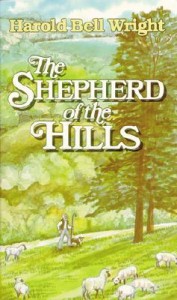Literary legacy contributes to sense of community
 Here’s an article about one of the most famous authors you’ve probably never heard of:
Here’s an article about one of the most famous authors you’ve probably never heard of:
Harold Bell Wright was among the most popular American authors of his time, penning 19 novels — with 15 of them making their way to the silver screen.
In 1930, The New York Times called Wright “the narrator of the hopes and dreams of the great mass of American readers from New York to California.”
Many of those hopes and dreams came to life on the pages of books Wright wrote from the beloved desert home he built, eight miles east of downtown Tucson. Constructed in the early 1920s, Wright made Tucson his home until signs of encroaching development caused him to flee to California in 1936.
Read about Wright’s home and the literature-themed subdivision in Tucson that it engendered. Be sure to look through the photo slideshow across the top of the article.
IS READING TOO MUCH BAD FOR KIDS?
 In this thoughtful article Scott Timberg ponders the question of whether his 7-year-old son’s addiction to reading is harmful to his development in this digital-immersion age.
In this thoughtful article Scott Timberg ponders the question of whether his 7-year-old son’s addiction to reading is harmful to his development in this digital-immersion age.
Timberg cites several experts on the question, but I was most intrigued by the number of comments that the article produced—most of them vocally in favor of the old-fashioned pursuit of reading.
My father left me all his books
Niall Williams writes novels. His father, Jack, read almost no fiction, preferring nonfiction, particularly history and biography. Jack had introduced the eight-year-old Niall to the marvel of books by taking him to a library and letting him roam free. So when Jack left all his own books to his son in his will. . . . Well, read for yourself this moving tribute to the power and significance of books.
Matthew Weiner: By the Book
The creator of “Mad Men” cites the impact of John Cheever’s fiction on the show: “Cheever has a voice filled with irony and comedy and pain that, on some level, I’m always seeking to emulate.”
Mad Men is a very literate show, so it’s no surprise that its creator, Matthew Weiner, has a lot to say about books.
Mentally ill in literature
Jacqueline Justice looks at the portrayal of mental illness in four famous works of literature:
- Benjy in The Sound and the Fury by William Faulkner
- Edna Pontellier in The Awakening by Kate Chopin
- Lennie Small in Of Mice and Men by John Steinbeck
- Holden Caulfield in Catcher in the Rye by J. D. Salinger
Justice acknowledges that literature reflects the views of its time. Therefore, the use of characters with mental illness “raises questions about what the use of mental illness as a plot point says about American society and readers’ treatment of mental illness.”
She concludes:
These novels all use the concept of mental illness differently to create multiple effects — and the trend in 20th-century American literature to employ main characters with mental illnesses is undeniably present. The question this movement poses is: are we further stigmatizing this minority, the mentally ill, by using their conditions to derive exciting plots? This is a credible concern to address. But what seems more likely is that the use of these characters and plot points serve to shed some broader light on the human experience. They allow readers to gain new perspectives, develop more nuanced ways of thinking, and to learn something about themselves.
